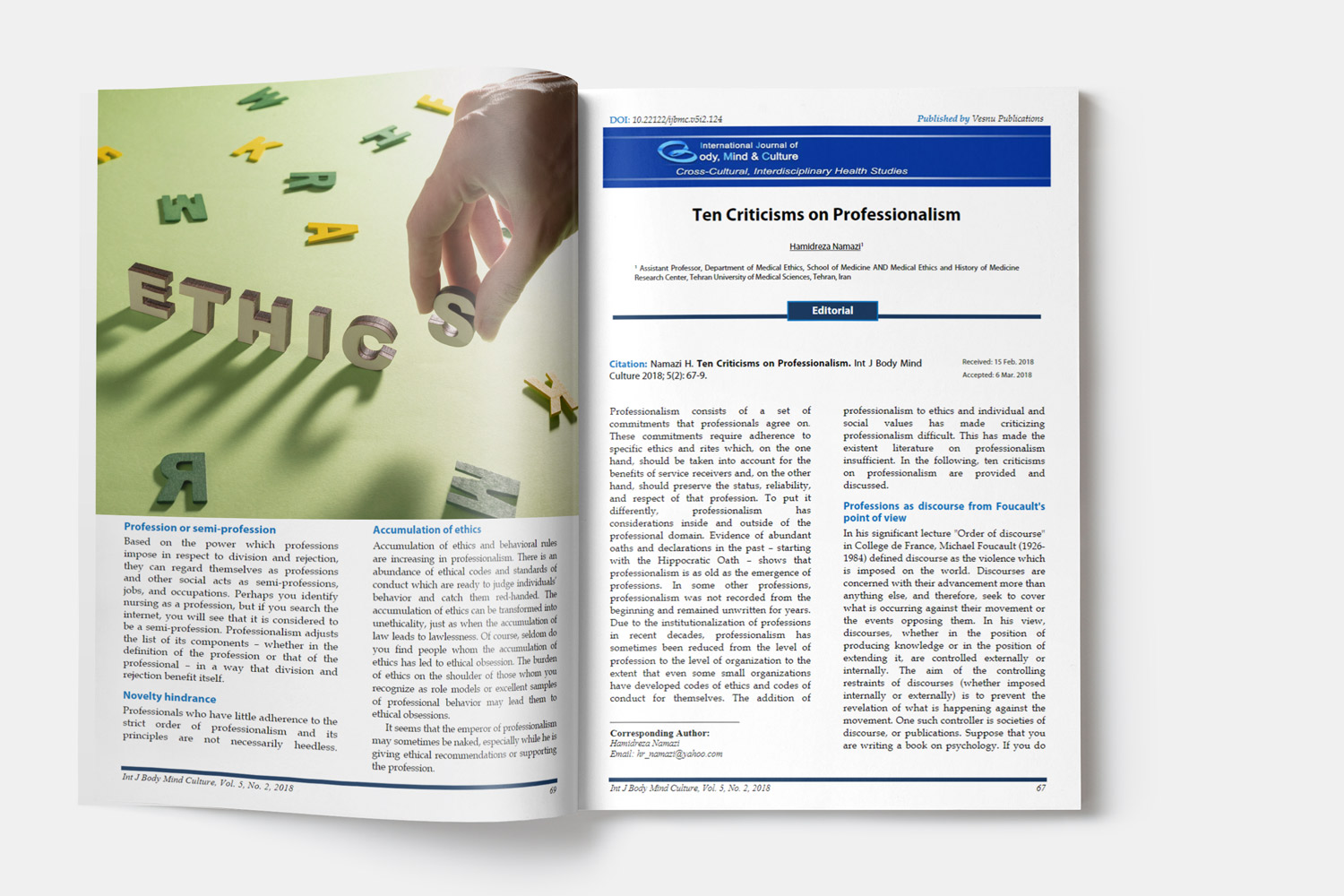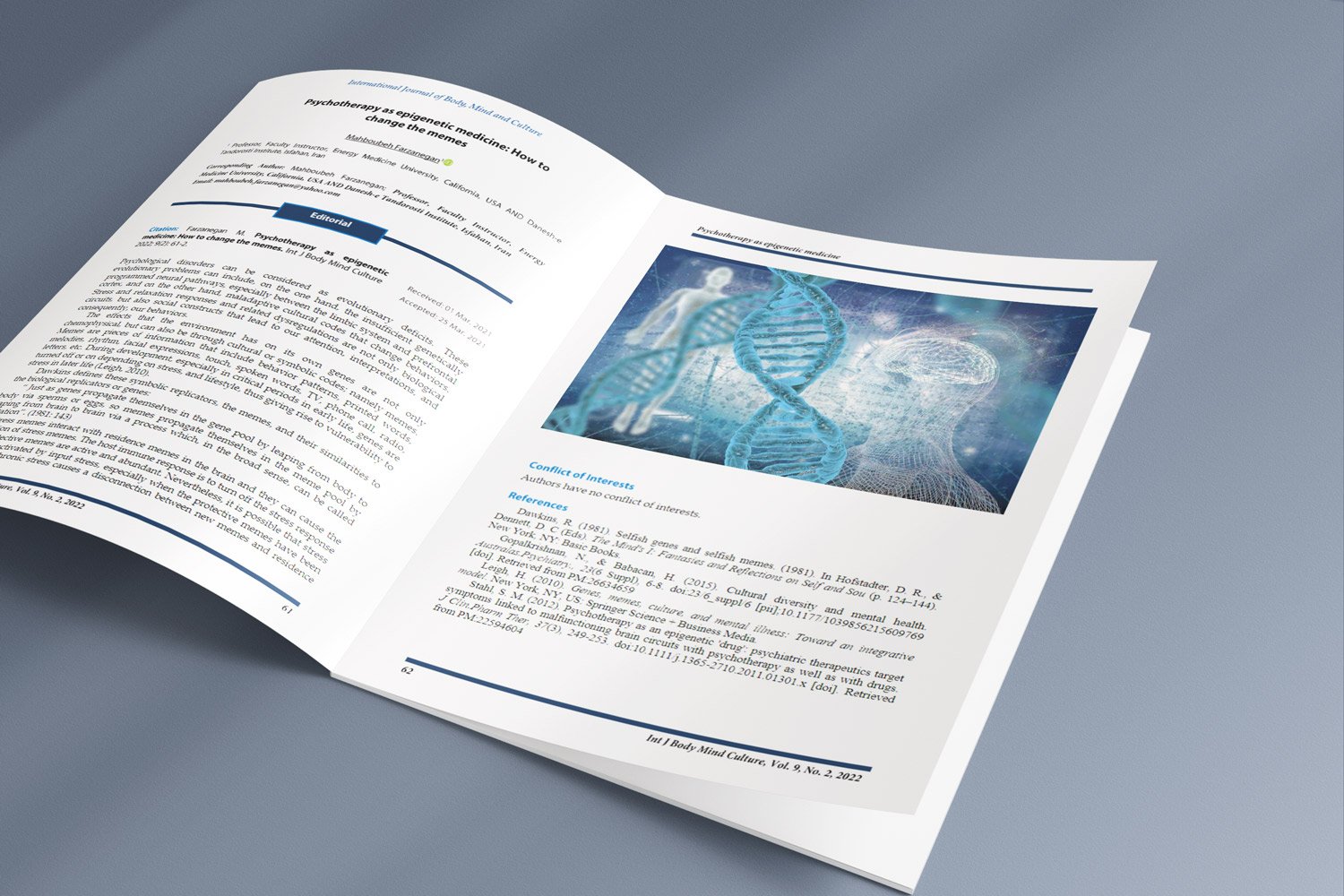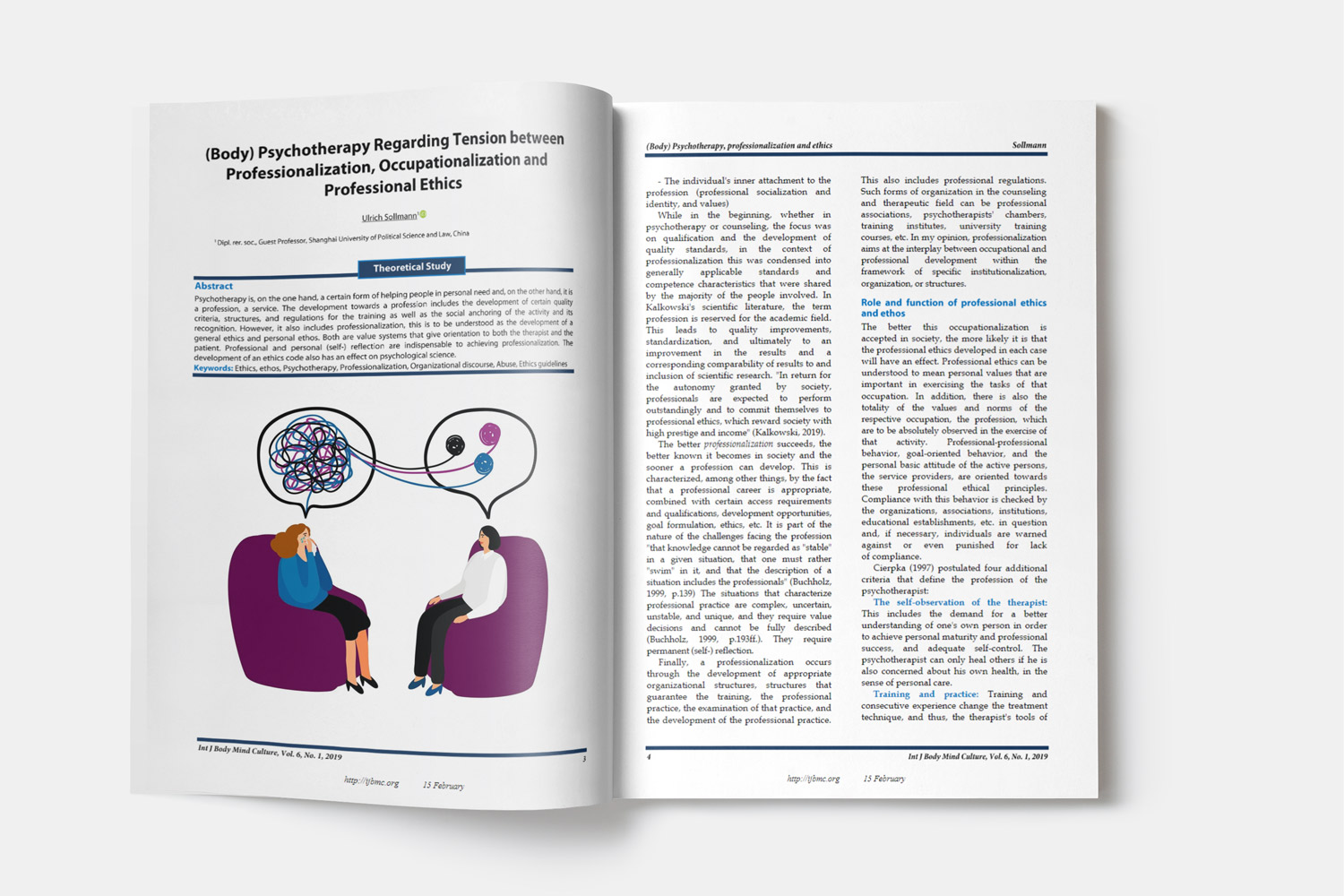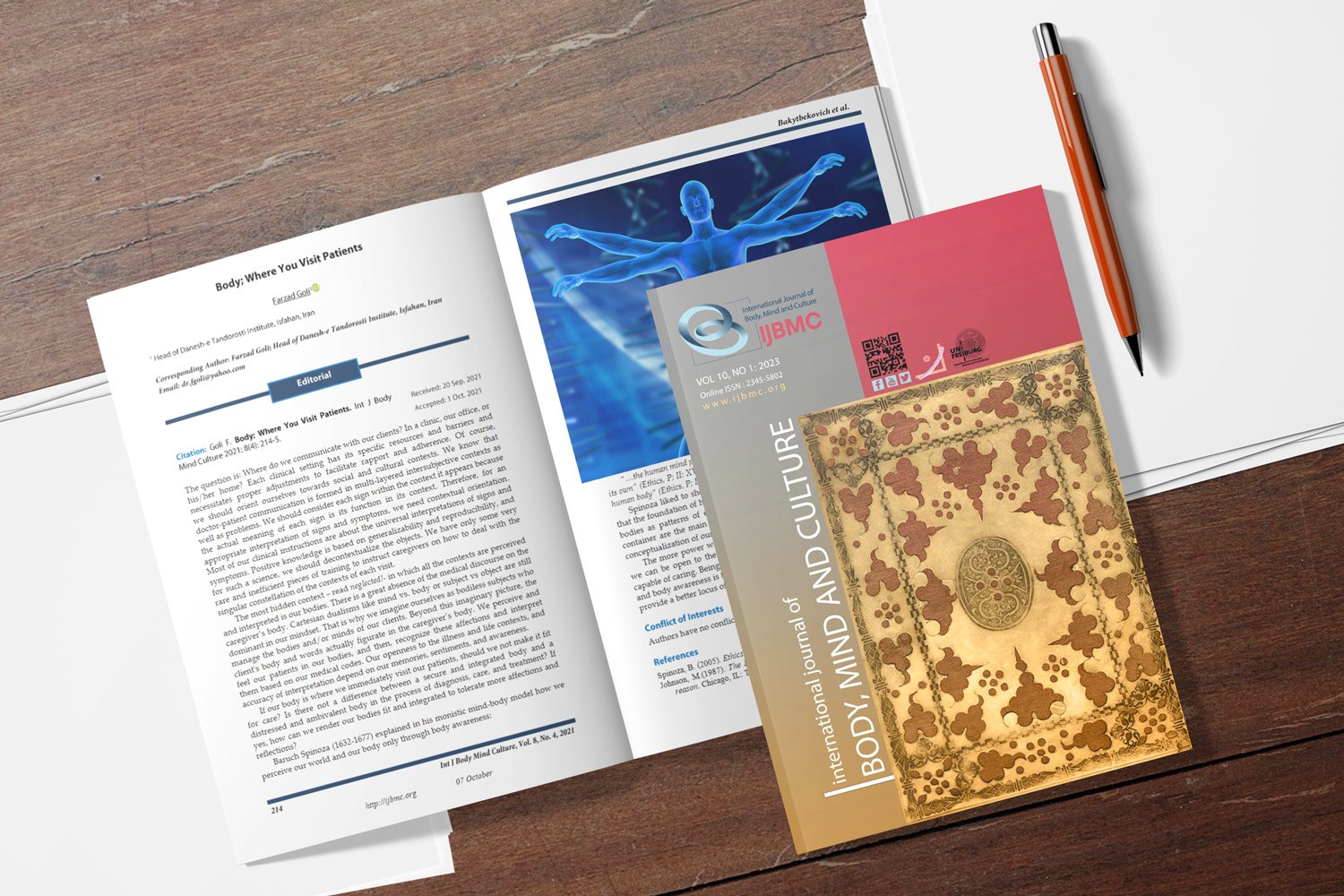The Effectiveness of Acceptance and Commitment Therapy on Physical Health and Quality of Life in Patients with Gastric (Stomach) Cancer
Downloads
Background: Gastric (stomach) cancer is the most prevalent cancer in the north region of Iraq, despite its prevalence substantially falling globally in recent years. It is a multi-factorial illness that arises from ongoing cell damage brought on by a lifetime exposure to various carcinogens. The purpose of the current study was to evaluate the effectiveness of acceptance and commitment therapy (ACT) on physical health and quality of life (QOL) in patients with gastric cancer.
Methods: The research was quasi-experimental with pre-test, post-test stages and control group. Only 28 of the 53 participants who received a gastric cancer diagnosis were deemed suitable for the trial. Patients were randomly separated into experimental (n = 14) and control (n = 14) groups after being chosen via purposeful sampling. The experimental group participated in eight sessions of 60 minutes of ACT. No interventions were given to the control group. The Physical Symptoms Inventory (PSI) developed by Powell and Enright (1991), the cancer-specific EORTC Core Quality of Life Questionnaire (EORTC QLQ-C30) by Aaronson et al. (1988), and a demographic information questionnaire were the three questionnaires utilized in this research. The data were analyzed using descriptive statistics and multivariate analysis of covariance (MANCOVA) with SPSS software. Significance level was defined as P ≤ 0.05.
Results: ACT was effective on physical health (F = 5.49, P < 0.04) and QOL (F = 37.42, P < 0.01) in patients with gastric (stomach) cancer.
Conclusion: Given that ACT is helpful in enhancing QOL and physical health in patients with gastric (stomach) cancer, health care facilities might use this intervention technique as a supplemental therapy to lessen the negative effects that these patients encounter.
Downloads
Aaronson, N. K., Bullinger, M., & Ahmedzai, S. (1988). A modular approach to quality-of-life assessment in cancer clinical trials. In H. Scheurlen, R. Kay, & M. Baum (Eds.). Cancer Clinical Trials (pp. 231-249) Berlin, Heidelberg: Springer Berlin Heidelberg.
Abyar, Z., Makvandi, B. , Bakhtiarpour, S., Naderi, F. , & Hafezi, F. . (2018). Comparison of the efficacy of acceptance and commitment therapy and mindfulness on the suicidal ideation of depressed women. Women's studies 9(1), 1-23.
Al Mosawi, A. (2021). Iraq cancer archive. Journal of Clinical and Translational Oncology, 2(1), 1-5.
Al Qadire, M., Alsaraireh, M., Alomari, K., Aldiabat, K. M., Al-Sabei, S., Al-Rawajfah, O. et al. (2021). Symptom Clusters predictive of quality of life among Jordanian women with breast cancer. Semin.Oncol.Nurs, 37(2), 151144. doi:S0749-2081(21)00027-9 [pii];10.1016/j.soncn.2021.151144 [doi]. Retrieved from PM:33771404
Arnold, M., Abnet, C. C., Neale, R. E., Vignat, J., Giovannucci, E. L., McGlynn, K. A. et al. (2020). Global burden of 5 major types of gastrointestinal cancer. Gastroenterology, 159(1), 335-349. doi:S0016-5085(20)30452-2 [pii];10.1053/j.gastro.2020.02.068 [doi]. Retrieved from PM:32247694
Bachmann, A. S., Zaunbauer, A. C., Tolke, A. M., Siniatchkin, M., Kluck, C., Wiltfang, J. et al. (2018). Well-being and quality of life among oral cancer patients - Psychological vulnerability and coping responses upon entering initial treatment. J Craniomaxillofac.Surg., 46(9), 1637-1644. doi:S1010-5182(18)30310-X [pii];10.1016/j.jcms.2018.05.042 [doi]. Retrieved from PM:29960813
Carrillo, G. M., & Santamaria, N. P. (2019). Life after a gastrectomy: Experience of patients with gastric cancer. Enferm Clin (Engl.Ed.), 29(1), 27-33. doi:S1130-8621(18)30113-X [pii];10.1016/j.enfcli.2018.06.006 [doi]. Retrieved from PM:30025796
Choi, E., Lee, S., Nhung, B. C., Suh, M., Park, B., Jun, J. K. et al. (2017). Cancer mortality-to-incidence ratio as an indicator of cancer management outcomes in Organization for Economic Cooperation and Development countries. Epidemiol Health, 39, e2017006. doi:epih.e2017006 [pii];10.4178/epih.e2017006 [doi]. Retrieved from PM:28171715
Chon, S. H., Berlth, F., Plum, P. S., Herbold, T., Alakus, H., Kleinert, R. et al. (2017). Gastric cancer treatment in the world: Germany. Transl.Gastroenterol Hepatol., 2, 53. doi:10.21037/tgh.2017.05.07 [doi];tgh-02-2017.05.07 [pii]. Retrieved from PM:28616608
Ciazynska, M., Pabianek, M., Szczepaniak, K., Ulanska, M., Skibinska, M., Owczarek, W. et al. (2020). Quality of life of cancer patients during coronavirus disease (COVID-19) pandemic. Psychooncology., 29(9), 1377-1379. doi:10.1002/pon.5434 [doi]. Retrieved from PM:32779778
Ferreira, N. (2011). Investigating the role of psychological flexibility and the use of an acceptance and commitment therapy based intervention in irritable bowel syndrome [PhD Thesis]. Edinburgh, Scotland: The University of.
Fock, K. M. (2014). Review article: the epidemiology and prevention of gastric cancer. Aliment Pharmacol Ther, 40(3), 250-260.
Ghorbani, V., Zanjani, Z., Omidi, A., & Sarvizadeh, M. (2021). Efficacy of acceptance and commitment therapy (ACT) on depression, pain acceptance, and psychological flexibility in married women with breast cancer: A pre- and post-test clinical trial. Trends Psychiatry.Psychother., 43(2), 126-133. doi:10.47626/2237-6089-2020-0022 [doi]. Retrieved from PM:34392667
Haraldstad, K., Wahl, A., Andenaes, R., Andersen, J. R., Andersen, M. H., Beisland, E. et al. (2019). A systematic review of quality of life research in medicine and health sciences. Qual.Life.Res, 28(10), 2641-2650. doi:10.1007/s11136-019-02214-9 [doi];10.1007/s11136-019-02214-9 [pii]. Retrieved from PM:31187410
Hashemi, Z., Afshari, A., & Einy, S. (2020). The effectiveness of acceptance and commitment education on improving the mental health and quality of life of elderly people with cancer. Iran J Health Educ Health Promot, 8(2), 160-171.
Hsieh, F. J., Wang, Y. C., Hsu, J. T., Liu, K. H., & Yeh, C. N. (2012). Clinicopathological features and prognostic factors of gastric cancer patients aged 40 years or younger. J Surg.Oncol., 105(3), 304-309. doi:10.1002/jso.22084 [doi]. Retrieved from PM:22116742
Jemal, A., Center, M. M., DeSantis, C., & Ward, E. M. (2010). Global patterns of cancer incidence and mortality rates and trends. Cancer Epidemiol Biomarkers.Prev, 19(8), 1893-1907. doi:1055-9965.EPI-10-0437 [pii];10.1158/1055-9965.EPI-10-0437 [doi]. Retrieved from PM:20647400
Kamaraju, S., Drope, J., Sankaranarayanan, R., & Shastri, S. (2020). Cancer prevention in low-resource countries: an overview of the opportunity. Am.Soc Clin Oncol.Educ Book.,
, 1-12. doi:10.1200/EDBK_280625 [doi]. Retrieved from PM:32239989
Kaptein, A. A., Morita, S., & Sakamoto, J. (2005). Quality of life in gastric cancer. World.J Gastroenterol, 11(21), 3189-3196. doi:10.3748/wjg.v11.i21.3189 [doi]. Retrieved from PM:15929166
Keefe, F. J., Lipkus, I., Lefebvre, J. C., Hurwitz, H., Clipp, E., Smith, J. et al. (2003). The social context of gastrointestinal cancer pain: A preliminary study examining the relation of patient pain catastrophizing to patient perceptions of social support and caregiver stress and negative responses. Pain, 103(1-2), 151-156. doi:S0304395902004475 [pii];10.1016/s0304-3959(02)00447-5 [doi]. Retrieved from PM:12749969
Kim, G. M., Kim, S. J., Song, S. K., Kim, H. R., Kang, B. D., Noh, S. H. et al. (2017). Prevalence and prognostic implications of psychological distress in patients with gastric cancer. BMC Cancer, 17(1), 283. doi:10.1186/s12885-017-3260-2 [doi];10.1186/s12885-017-3260-2 [pii]. Retrieved from PM:28427439
Kouwenberg, C. A. E., de Ligt, K. M., Kranenburg, L. W., Rakhorst, H., de, Leeuw D., Siesling, S. et al. (2020). Long-term health-related quality of life after four common surgical treatment options for breast cancer and the effect of complications: A retrospective patient-reported survey among 1871 patients. Plast.Reconstr.Surg., 146(1), 1-13. doi:10.1097/PRS.0000000000006887 [doi];00006534-202007000-00001 [pii]. Retrieved from PM:32590633
Liu, D., Mehta, D., Kaur, S., Kumar, A., Parikh, K., Chawla, L. et al. (2018). Decreasing mortality and hospitalizations with rising costs related to gastric cancer in the USA: An epidemiological perspective. J Hematol.Oncol., 11(1), 138. doi:10.1186/s13045-018-0682-5 [doi];10.1186/s13045-018-0682-5 [pii]. Retrieved from PM:30545376
Shahid, M. H., Jawad, S. M., Abbas, A. A. (2017). Experience of gastric cancer in Al- Sadder City in Baghdad. Iraqi Postgraduate Medical Journal, 16(2), 129-137.
Miller, K. D., Nogueira, L., Mariotto, A. B., Rowland, J. H., Yabroff, K. R., Alfano, C. M. et al. (2019). Cancer treatment and survivorship statistics, 2019. CA.Cancer J Clin, 69(5), 363-385. doi:10.3322/caac.21565 [doi]. Retrieved from PM:31184787
Mohialdeen, F. A., Gubari, M. I., Hama-ghareeb, K. A., Ahmad. A. R., Abdulrahim, C. J., Mhmad, N.A., et al. (2019). Distribution of Helicobacter pylori infection among gastric cancer in Hiwa hospital, Sulaimani city. J Res Med Dent Sci, 7(2): 194-196.
Powell, T. J., & Enright, S. J. (2015). Anxiety and stress management. London, UK: Taylor & Francis.
Roser, K., Erdmann, F., Michel, G., Winther, J. F., & Mader, L. (2019). The impact of childhood cancer on parents' socio-economic situationÇöA systematic review. Psychooncology, 28(6), 1207-1226.
Sadighi, S., Montazeri, A., Sedighi, Z., Mohagheghi, M. A., & Froutan, H. (2009). Quality of life in patients with gastric cancer: translation and psychometric evaluation of the Iranian version of EORTC QLQ-STO22. BMC Cancer, 9, 305. doi:1471-2407-9-305 [pii];10.1186/1471-2407-9-305 [doi]. Retrieved from PM:19715606
Sung, H., Ferlay, J., Siegel, R. L., Laversanne, M., Soerjomataram, I., Jemal, A. et al. (2021). Global Cancer Statistics 2020: GLOBOCAN Estimates of Incidence and Mortality Worldwide for 36 Cancers in 185 Countries. CA.Cancer J Clin, 71(3), 209-249. doi:10.3322/caac.21660 [doi]. Retrieved from PM:33538338
Taleghani, F., Ehsani, M., Farzi, S., Farzi, S., Adibi, P., Moladoost, A. et al. (2021). Nutritional challenges of gastric cancer patients from the perspectives of patients, family caregivers, and health professionals: a qualitative study. Support Care Cancer, 29(7), 3943-3950. doi:10.1007/s00520-020-05951-7 [doi];10.1007/s00520-020-05951-7 [pii]. Retrieved from PM:33392766
Trivedi, P. J., Crothers, H., Mytton, J., Bosch, S., Iqbal, T., Ferguson, J. et al. (2020). Effects of primary sclerosing cholangitis on risks of cancer and death in people with inflammatory bowel disease, based on sex, race, and age. Gastroenterology, 159(3), 915-928. doi:S0016-5085(20)34702-8 [pii];10.1053/j.gastro.2020.05.049 [doi]. Retrieved from PM:32445859
Verduzco-Aguirre, H. C., Babu, D., Mohile, S. G., Bautista, J., Xu, H., Culakova, E. et al. (2021). Associations of uncertainty with psychological health and quality of life in older adults with advanced cancer. J Pain Symptom Manage., 61(2), 369-376. doi:S0885-3924(20)30690-4 [pii];10.1016/j.jpainsymman.2020.08.012 [doi]. Retrieved from PM:32822750
Viklund, P., Wengstrom, Y., & Lagergren, J. (2006). Supportive care for patients with oesophageal and other upper gastrointestinal cancers: The role of a specialist nurse in the team. Eur.J Oncol.Nurs, 10(5), 353-363. doi:S1462-3889(06)00036-6 [pii];10.1016/j.ejon.2006.01.009 [doi]. Retrieved from PM:16807106
Ye, M., Du, K., Zhou, J., Zhou, Q., Shou, M., Hu, B. et al. (2018). A meta-analysis of the efficacy of cognitive behavior therapy on quality of life and psychological health of breast cancer survivors and patients. Psychooncology., 27(7), 1695-1703. doi:10.1002/pon.4687 [doi]. Retrieved from PM:29500842
Copyright (c) 2022 International Journal of Body, Mind and Culture

This work is licensed under a Creative Commons Attribution-NonCommercial 4.0 International License.















